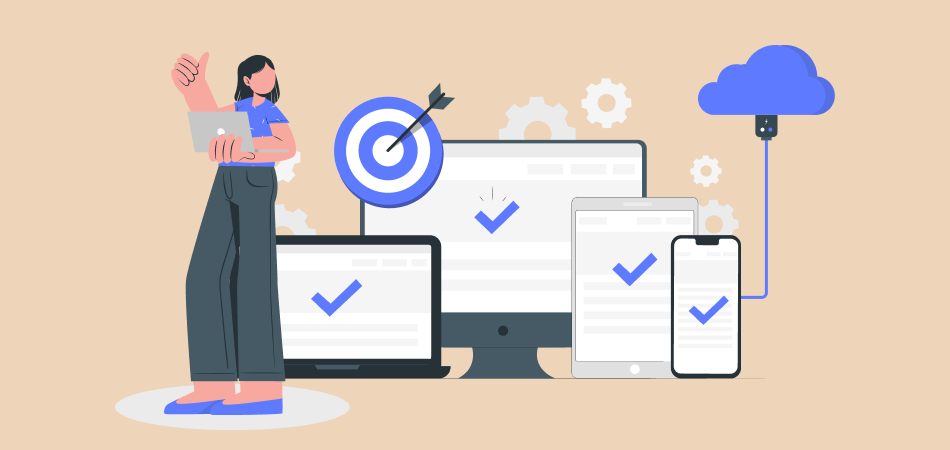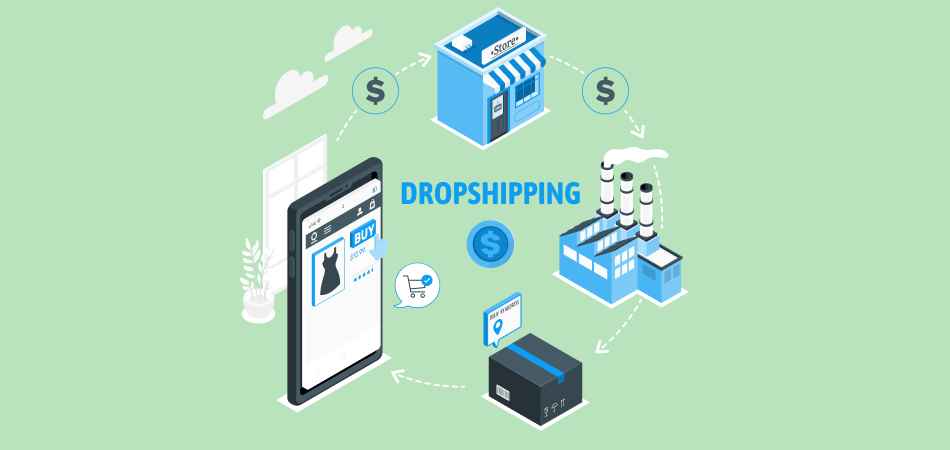Product Bundling: Types, Examples and Practical Tips for Online Stores

You see it all the time when you're online shopping—add this to your cart for a discount, buy this product and get this one free. This common marketing technique is called product bundling, and it's a great way to improve your online store's conversions. In this technique, marketers combine two or more products and sell them together at a discounted price.
This can effectively clear out inventory, boost sales of slower-moving items, or attract new customers. This write-up will explore the different types of product bundling, examples of effective product bundles, and practical tips for setting up your own product bundles in your online store.
Types of Product Bundling
Product bundling is a common marketing strategy that involves combining two or more products into one unit for sale. Bundling can effectively increase sales and revenues and offer customers more value for their money. There are several different types of product bundling, each with its own advantages and disadvantages, and they are:
Pure Bundling
In pure bundling, business owners create bundles of different single products and sell them to earn profit. However, such products can't be sold as standalone products, and the customers have limited choices.
For example, cable TV providers often combine multiple channels that they know people won't buy separately. So, they sell these channels as a package, and it comes up as an effective strategy to sell multiple channels.
New Product Bundling
In this type, marketers offer a newly launched product with a high-selling product as a "bundle." So, the new product gets free promotion through the products already good at sales. This technique only works when you're sure about the popularity of the main product; if it's high, the customers will surely buy the bundle. Many eCommerce stores mix their new products with their well-known merchandise to get some spotlight for their latest product.
Let's take the example of the "Nintendo switch + the legend of Zelda product" bundle. In this bundle, Nintendo played a smart move and introduced some new games but combined them with their best-selling products. For instance, they offered a Zelda carrying case and added their two latest games to grab customers' attention.
Mix and Match Bundling
In mix-and-match bundling, the customers can create a custom bundle from a list of products offered by the marketer through bundling. The technique is beneficial to brick-and-mortar stores that need to clear the items in bulk. The store owners can decide which products they would like to get rid of to refill the inventory with new ones and allow their customers to add products they like in bundles.
Through this method, the customers feel like they're in power to choose the items, which also increases the value of the item. Customers are often interested in choosing the products they like rather than getting pressure from the store to buy the items that don't even interest them.
For example, some retail stores allow their customers to buy a combo of a shirt and trousers at a decided price, but the customers can choose the shirt and trousers according to their choice.
Cross-sell Bundling
In this type, marketers sell a complementary product with the main product as an add-on. The technique is very effective when you need to sell lower-priced items but want to combine anything with a higher price. For example, while selling a costly smartphone, you can bundle it with a phone cover.
Gifting Bundles
Product bundling can be a great way to show your loved ones how much you care, and gifting bundles can solve your concern. By bundling together products that complement each other, you can create a unique and thoughtful gift that is sure to please you.
For example, you could bundle together a cozy blanket, a scented candle, and a box of chocolates to create a relaxing and indulgent gift. Or, you could put together a care package with a facial cleanser, a body scrub, and a scented lotion. Whatever products you choose, bundling them together is a great way to show your loved ones how much you care.
Inventory Clearance Bundling
This type is preferred by marketers who need to clear some space in their inventories. First, they need to follow a specific technique to clear the inventory - pairing a faster-moving item with a slower-moving item.
The method includes discounts on your bundles so that shoppers who are interested in one of your top-selling items will see the bundle as a whole and be more inclined to buy it. By doing this, not only will you increase the chances of selling your items, but you'll also be able to get rid of some inventory that's been taking up space.
For example, if a tea company realizes that its tea accessories are in higher demand than its tea products, they start to bundle their tea with other accessories, which makes it an impressive deal.
Buy-one-get-one Bundles
Buy-one-get-one Bundles are used when marketers need to sell one item but want to sell another complementary product with a discount added to it. This type of product bundling works fine when you need to sell one-time purchase products.
For example, if a customer buys a hair dryer, they are less likely to visit the store again soon. So, you can add a complimentary product, discount, or gift card to encourage customers to buy more products in a single shopping experience.
Occasional Bundling
The occasional bundling is a concept of product bundling that many companies around the globe use. The occasional building is about building an emotional connection between the customer and the company. This can be achieved through the company's commitment to its consumers.
The product or the service that is being offered. The emotional connection will be an advantage for the company in the long run. The emotional connection that is developed will lead to a stronger business, which in turn produces more profit.
Examples of Successful Product Bundling
Here we have some well-reputed online brands that have been receiving benefits from product bundling; let's begin with the first one:
Kylie Cosmetics
The only reason why Kylie Cosmetics is a worldwide popular brand is that they introduced simple yet useful kits to their customers. With the introduction of "Lip Kits," a product bundle that consists of lipstick and lipliner in one box, the success of the brand skyrocketed like anything.
The global brand still relies on bundled products, and its website even contains a separate section that only displays the most popular bundles that have been in high demand throughout the year.
Naturebox
Product bundling comes up as an effective marketing strategy for Naturebox, which sells healthy snacks online. By bundling together multiple products into a single package, Naturebox is able to offer customers a discount on the total purchase price.
This encourages customers to buy more products from Naturebox, ultimately boosting the company's sales and profits. Their products are highly nutritious and great for health food enthusiasts. In addition, they often do giveaways and award their loyal customers that participate in their contests.
HelloFresh
HelloFresh is known for its home-cooked meals, but it doesn't exactly show the real meaning of product bundling. HelloFresh is a great option for anyone who is looking to eat healthily and have well-rounded meals. The company is known for its packaging of ingredients that make it easy to cook delicious and nutritious meals.
Useful Tips Regarding Product Bundling for Online Stores
If you're a marketer focused on boosting sales and think product building is the best option, you can consider the following tips:
Create Data-driven Bundles
Data-driven bundles work effectively, but you must observe your customer's personal data and purchasing history. In this way, you'll create unique bundles for specific clients.
For example, you can put the data into the CRM system and learn what your customers like to buy, what they have in their abandoned shopping carts, and what they are looking forward to buying. This information would be enough to create unique bundles for your customers.
Offer Different Packages
If you like to keep your sales customer-centric, you must provide multiple choices to achieve customer satisfaction. The more options you offer your clients, the more likely they are to find something they like.
Most of the time, customers switch stores when they feel like you're offering them limited packages. The reason behind that is they feel like the store is only offering slowly-moving products.
Guide Your Customers to Save Money
When your customers know they saved money after their shopping, they feel satisfied and love to revisit your store. As the main motto of product bundling is to save money, you must inform your customers about the money they'll save if they buy the specific bundle offered.
This information can be shown during the checkout or while recommending a product, in the product description, or any other way.
Use Different Channels to Promote Your Bundles
This strategy will be fruitless if your target audience is unaware of your existence. Research to discover the most effective channels of communication with your potential customers, and make sure to inform them about any specials or deals that interest them.
It would be best if you put in the extra effort to let them know that you exist and that you have something of value to offer them before you can reasonably expect anything in return.
Wrapping Up
Product bundling works effectively for online stores and physical stores. As marketers are coming up with new techniques almost every day, product bundling is able to create its mark in the industry. While keeping an eye on the fierce competition, entrepreneurs create and develop new strategies to grab customers' attention.
When they think about the strategies, product bundling comes up as a win-win situation for both the customer and store owner. So, that is all about product bundling, its types, and examples, but if you want to read more informative blogs on eCommerce, start reading DSers Blogs.












 Company
Company
 Why Choose DSers
Why Choose DSers
 Blog
Blog
 Help Center
Help Center



